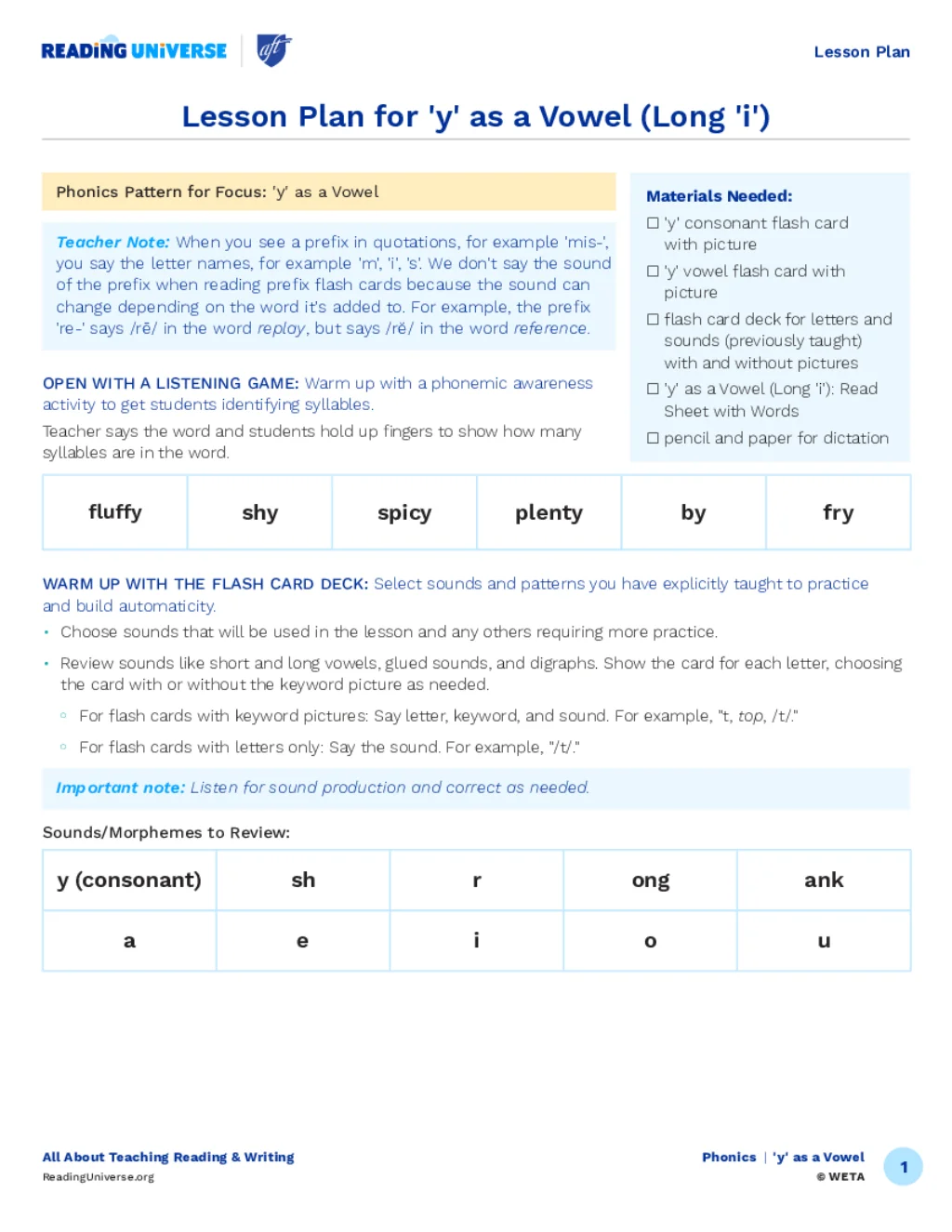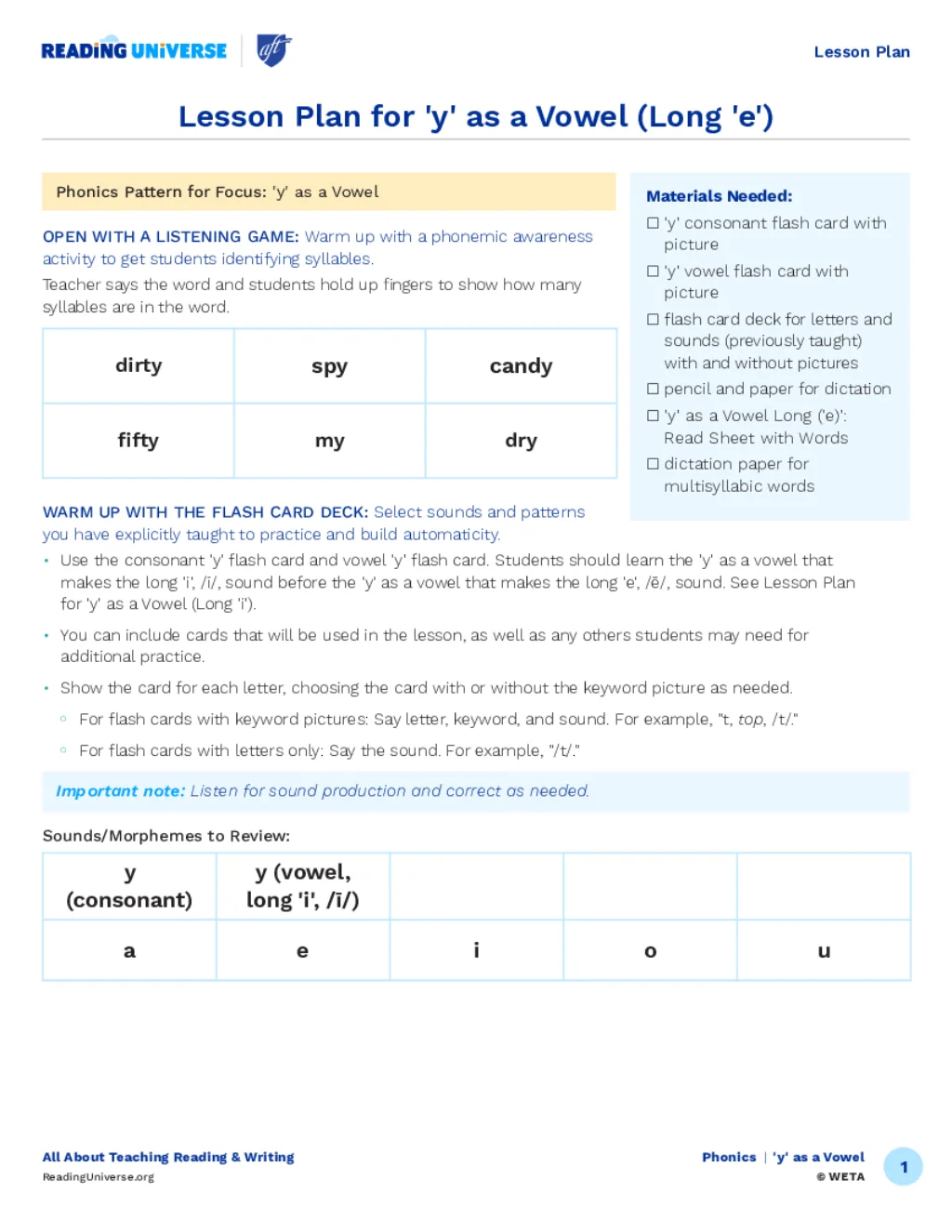During syllable work, you spell syllables aloud and then have children practice the steps for syllable division.
You can also incorporate syllable work into the other parts of your lesson. For example, during your listening game, say a word and have students identify the vowel sound as short by making the motion of a breve symbol (arms in the air above their heads in the shape of a smile) while saying the short vowel sound or making a macron (arms in a straight line out like a 't') while saying a long vowel sound.
Or you can add syllables to your flash cards as part of your warm-up. Ask students to identify the vowel, then guide them to look immediately after the vowel and ask if the syllable is closed, open, or magic 'e'. Then have them identify the vowel sound and read the word.
Ultimately, syllable work is all about decoding words. Doing syllable work in small groups focusing on reading is a great way to provide guided practice in this skill. Remember that students should stop using scaffolds such as coding and labeling as soon as they begin to read closed-syllable words automatically.




